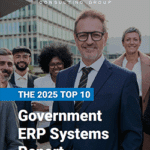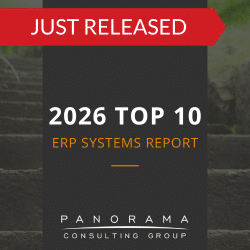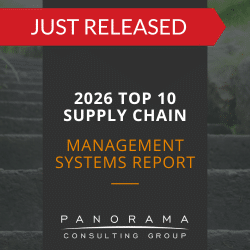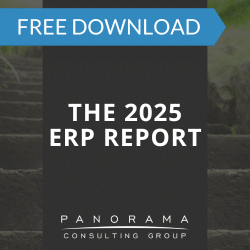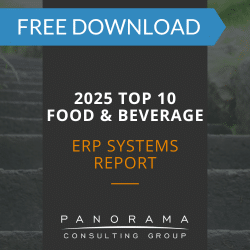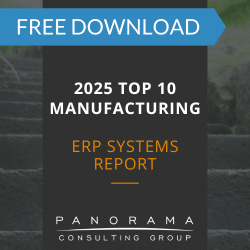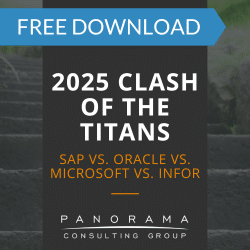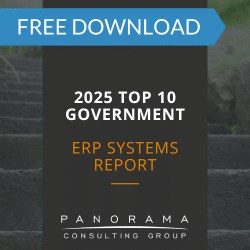Key Takeaways
- Edge ERP refers to ERP functionality deployed closer to where business activity occurs, such as factory floors, warehouses, or remote field locations.
- The benefits of edge ERP include faster decision-making, greater operational resilience, and improved compliance.
- Edge ERP integration challenges arise when connecting localized ERP nodes with cloud systems, CRM platforms, IoT devices, and enterprise data warehouses.
- Organizations evaluating edge ERP should assess synchronization capabilities, security controls, and vendor experience with hybrid deployments.
Once considered emerging technology, Edge ERP is now a mainstay for asset-heavy industries, organizations with remote operations, and companies seeking faster, localized decision-making across their footprint.
This post explores the definition of edge ERP, why executives should care, and how to evaluate its fit within your broader transformation goals.
What Is Edge ERP?
To understand edge ERP, it helps to first define edge computing.
In simple terms, edge computing means processing data closer to where it is created—at the “edge” of your network—instead of sending it to a centralized data center or cloud.
For example, a manufacturing facility might analyze sensor data on-site instead of relying on a remote server.
Now apply that concept to enterprise systems. Edge ERP refers to ERP functionality that operates closer to business operations—whether that’s a plant floor, warehouse, retail location, or oil rig. Instead of relying solely on centralized cloud servers, edge ERP enables localized processing for certain transactions, analytics, and workflows.
The 2025 ERP Report
72.6% of respondents said they've already deployed AI at their organizations. Learn about AI adoption and other ERP trends by downloading our latest report.
Where Edge ERP Is Showing Up Today
The top ERP vendors offer edge-capable components that extend certain ERP functions to local environments.
For example, SAP’s Business Technology Platform and Oracle Cloud Infrastructure both offer edge services integrated with ERP modules—particularly for manufacturing, logistics, and utilities.
Meanwhile, Microsoft Dynamics 365 continues to support edge workloads in scenarios such as retail, warehouse operations, and field service.
The Benefits of Edge ERP
Edge ERP offers measurable benefits to organizations with geographically distributed operations or latency-sensitive environments.
1. Faster Decision-Making at the Operational Level
Edge ERP supports on-site analytics and real-time workflows. This helps local teams make immediate decisions on issues like batch quality, equipment malfunctions, or supply shortages.
By reducing dependence on cloud roundtrips, organizations have improved responsiveness in areas where delays can be disastrous.
2. Greater System Resilience
Localized ERP capabilities can keep operations running even during internet outages or cloud disruptions. This is especially important for mining, shipping, defense, or agriculture—where remote locations or regulated environments make uptime essential.
3. Lower Network Load and Cost
Edge ERP can reduce the volume of data sent to the cloud by filtering, summarizing, or processing locally. This reduces infrastructure costs and improves performance for time-sensitive processes.
4. Improved Data Sovereignty and Compliance
With increasing regulatory pressure around data privacy and residency (including GDPR updates and regional data governance laws), many organizations now rely on edge ERP to process sensitive data on-site before syncing with central systems.
Edge ERP Integration Challenges
- Manufacturing Execution Systems (MES) for shop floor coordination.
- Customer Relationship Management (CRM) tools for order and service tracking.
- IoT platforms for equipment monitoring and predictive maintenance.
- Data lakes or analytics hubs for cross-functional reporting.
The challenge is this: most of these systems live in different environments—some in the cloud, others on-premise, many with different update cycles and data formats. That creates friction.
Consider this scenario:
A food and beverage company runs production at several regional plants using edge ERP nodes to optimize batch scheduling and quality checks. Meanwhile, demand forecasts are generated in a cloud-based CRM platform used by corporate marketing.
If these systems fall out of sync—say, the CRM updates a promotion that the production team does not see in real time—inventory levels could fall short, resulting in lost sales or penalties from retail partners.
These are not theoretical issues—they affect fill rates, customer satisfaction, and ultimately profitability.
Our ERP selection consultants always tell clients to treat integration as a strategic priority—backed by clear ownership, reliable data flows, and cross-functional accountability.
How to Evaluate Edge ERP Options
When evaluating options, we recommend asking the following questions:
- Which functions can operate locally vs. in the cloud?
- How are data synchronization and conflict resolution handled?
- What security controls exist at the edge layer?
- What reference clients has the vendor supported with edge ERP deployments?
Avoid being swayed by vendor marketing alone. Validate claims through customer references, pilot testing, and by working with an independent ERP selection consultant.
Our ERP consultants often advise clients to pilot edge functionality in a single site or region first, then evaluate performance, integration, and data synchronization before scaling. This allows for a controlled environment to surface risks, test vendor claims, and align edge deployments with real business priorities.
Learn More About Edge ERP
Edge ERP should support—not distract from—your broader ERP or digital transformation goals. Do edge deployments align with your long-term roadmap, including automation and AI integration? Does real-time decision-making support your supply chain KPIs?
Panorama’s independent ERP consultants help organizations explore edge ERP without vendor bias. From readiness assessments to vendor scorecards, we guide clients through the architecture, risk, and business case decisions that make edge ERP either a game-changer or an expensive detour.


